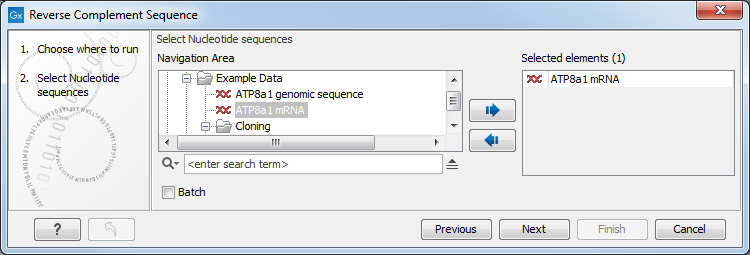Reverse complements of sequences
CLC Main Workbench is able to create the reverse complement of a
nucleotide sequence. By doing that, a new sequence is created which
also has all the annotations reversed since they now occupy the
opposite strand of their previous location.
To quickly obtain the reverse complement of a sequence or part of a sequence, you may select a region on the negative strand and open it in a new view:
right-click a selection on the negative strand |
Open selection in New View (![]() )
)
By doing that, the sequence will be reversed. This is only possible when the double stranded view option is enabled. It is possible to copy the selection and paste it in a word processing program or an e-mail. To obtain a reverse complement of an entire sequence:
Tools | Nucleotide Analysis (![]() )| Reverse Complement Sequence
(
)| Reverse Complement Sequence
(![]() )
)
This opens the dialog displayed in figure 19.3:

Figure 19.3: Creating a reverse complement sequence.
Use the arrows to add or remove sequences or sequence lists from the selected elements list.
Click Finish to start the tool.
This will open a new view in the View Area displaying the
reverse complement of the selected sequence. The new sequence is not
saved automatically. To save the sequence, drag it into the
Navigation Area or press Ctrl + S (![]() + S on Mac) to
activate a save dialog.
+ S on Mac) to
activate a save dialog.
